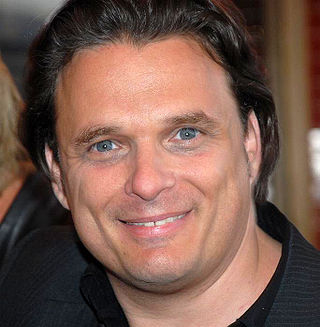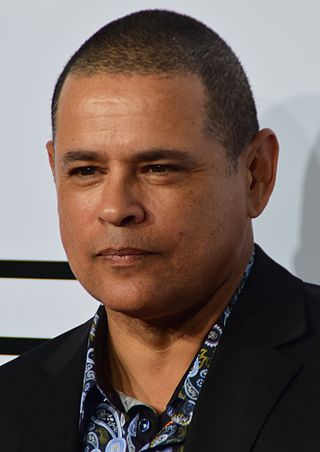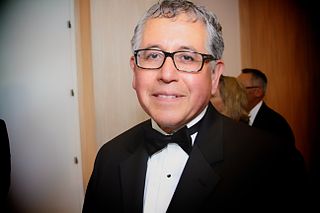
The Aryan Brotherhood is a neo-Nazi prison gang and an organized crime syndicate that is based in the United States and has an estimated 15,000–20,000 members both inside and outside prisons. The Southern Poverty Law Center (SPLC) has characterized it as "the nation's oldest major white supremacist prison gang and a national crime syndicate" while the Anti-Defamation League calls it the "oldest and most notorious racist prison gang in the United States". According to the Federal Bureau of Investigation (FBI), the Aryan Brotherhood makes up an extremely low percentage of the entire US prison population, but it is responsible for a disproportionately large number of prison murders.

Danny Trejo is an American actor. Born in Los Angeles, Trejo's film career began in 1985, when he landed a role in Runaway Train (1985). The first film in which he was given a proper credited role was as Art Sanella in Death Wish 4: The Crackdown (1987). He went on to star in a multitude of other films, many of which were small parts as inmates, gangsters, or other criminals, appearing in Desperado, Heat, From Dusk till Dawn (1996), Con Air (1997), The Replacement Killers (1998), Reindeer Games (2000), and Once Upon a Time in Mexico (2003), among others.

San Quentin Rehabilitation Center (SQ), formerly known as San Quentin State Prison, is a California Department of Corrections and Rehabilitation state prison for men, located north of San Francisco in the unincorporated place of San Quentin in Marin County.
East Los Angeles College (ELAC) is a public community college in Monterey Park, California, a suburb of Los Angeles. It is part of the California Community Colleges System and the Los Angeles Community College District. With fourteen communities comprising its primary service area and an enrollment of 35,403 students, ELAC had the largest student body campus by enrollment in the state of California as of 2018. It was situated in northeastern East Los Angeles before that part of unincorporated East Los Angeles was annexed by Monterey Park in the early 1970s. ELAC offers associate degrees and certificates.

The Mexican Mafia, also known as La eMe, is a Mexican American criminal organization in the United States. Despite its name, the Mexican Mafia has no origins in Mexico, and is entirely a U.S. criminal prison organization. Law enforcement officials report that the Mexican Mafia is the deadliest and most powerful gang within the California prison system.

Zoot Suit is a play written by Luis Valdez, featuring incidental music by Daniel Valdez and Lalo Guerrero. Zoot Suit is based on the Sleepy Lagoon murder trial and the Zoot Suit Riots. Debuting in 1979, Zoot Suit was the first Chicano play on Broadway. In 1981, Luis Valdez also directed a filmed version of the play, combining stage and film techniques.

Damian Robert Chapa is an American actor, film director, screenwriter, and producer.

The Royal Chicano Air Force (RCAF) is a Sacramento, California-based art collective, founded in 1970 by Ricardo Favela, José Montoya and Esteban Villa. It was one of the "most important collective artist groups" in the Chicano art movement in California during the 1970s and the 1980s and continues to be influential into the 21st century.

Los Four was a Chicano artist collective active based in Los Angeles, California. The group was instrumental in bringing the Chicano art movement to the attention of the mainstream art world.
Joseph Morgan was an American gangster who became the first non-Hispanic member of the Mexican Mafia. He received the nickname "Pegleg" by authorities because of his prosthetic leg.

American Me is a 1992 American independent crime drama film produced and directed by Edward James Olmos in his directorial debut, and written by Floyd Mutrux and Desmond Nakano. Olmos stars as Montoya Santana, who is loosely based on Mexican Mafia boss Rodolfo Cadena. Executive producers included record producer Lou Adler, screenwriter Mutrux, and Irwin Young. The film is a fictionalized account of the founding and rise to power of the Mexican Mafia in the California prison system from the 1950s into the 1980s.

Luis Javier Rodriguez is an American poet, novelist, journalist, critic, and columnist. He was the 2014 Los Angeles Poet Laureate. Rodriguez is recognized as a major figure in contemporary Chicano literature, identifying himself as a native Xicanx writer. His best-known work, Always Running: La Vida Loca, Gang Days in L.A., received the Carl Sandburg Literary Award and has been controversial on school reading lists for its depictions of gang life.

Raymond Cruz is an American actor, best known for his starring role as Detective Julio Sanchez in the series The Closer and its spinoff Major Crimes, as well as his recurring role as drug lord Tuco Salamanca in the crime drama Breaking Bad and its prequel series Better Call Saul.
Estevan Oriol is a photographer and director from Los Angeles, of Mexican-Italian descent. Best known for his distinct, gritty 35mm black and white work, documenting chicano, cholo culture, as well as celebrities within film and hip-hop, and lingerie work, his images have been featured in magazines, on album covers and in exhibitions across the world. Oriol is also known for directing several music videos for the likes of Blink 182, D12, Cypress Hill and more, as well as for his partnerships with life-long friend and collaborator, Mister Cartoon for Joker Brand Clothing and Soul Assassins Studios, the latter of which the two opened together by way of Cypress Hill's producer, DJ Muggs.

Jesús Salvador Treviño is an American television director of Mexican descent.

The Chicano Art Movement represents groundbreaking movements by Mexican-American artists to establish a unique artistic identity in the United States. Much of the art and the artists creating Chicano Art were heavily influenced by Chicano Movement which began in the 1960s.

Asco was an East Los Angeles based Chicano artist collective, active from 1972 to 1987. Asco adopted its name as a collective in 1973, making a direct reference to the word's significance in Spanish ("asco"), which is disgust or repulsion. Asco's work throughout 1970s and 1980s responded specifically to socioeconomic and political problems surrounding the Chicano community in the United States, as well the Vietnam War. Harry Gamboa Jr., Glugio "Gronk" Nicandro, Willie F. Herrón III and Patssi Valdez form the core members of the group.
A prison gang is an inmate organization that operates within a prison system, that has a corporate entity, exists into perpetuity, and whose membership is restrictive, mutually exclusive, and often requires a lifetime commitment. Political scientist David Skarbekargues the emergence of prison gangs are due to the dramatic increase in the prison population and inmate's demand for safety. Skarbek observes that in a small, homogeneous environment, people can use social norms to interpret what behavior is acceptable, but a large, heterogeneous setting undermines social norms and acceptable behavior is more difficult to determine. Prison gangs are geographically and racially divided, and about 70% of prison gang members are in California and Texas. Skarbek suggests prison gangs function similar to a community responsibility system. Interactions between strangers are facilitated because you do not have to know an individual's reputation, only a gang's reputation. Some prison gangs are transplanted from the street. In some circumstances, prison gangs "outgrow" the internal world of life inside the penitentiary, and go on to engage in criminal activities on the outside. Gang umbrella organizations like the Folk Nation and People Nation have originated in prisons.

A cholo or chola is a member of a Chicano and Latino subculture or lifestyle associated with a particular set of dress, behavior, and worldview which originated in Los Angeles. A veterano or veterana is an older member of the same subculture. Other terms referring to male members of the subculture may include vato and vato loco. Cholo was first reclaimed by Chicano youth in the 1960s and emerged as a popular identification in the late 1970s. The subculture has historical roots in the Pachuco subculture, but today is largely equated with anti-social behavior, criminal behavior and gang activity.

Chicano cinema is an aspect of Mexican American cinema that refers to the filmmaking practices that emerged out of the cultural consciousness developed through the Chicano Movement. Luis Valdez is generally regarded as the first Chicano filmmaker and El Teatro Campesino as the first theater company.













